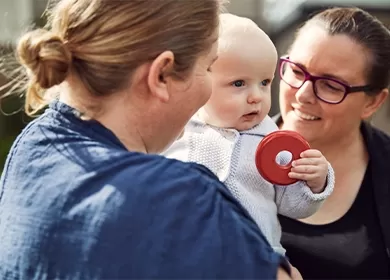Don’t have an account?
Select the donation type you’d like to make
Why blood type matters
They say opposites attract, but when it comes to blood transfusion, some things were never meant to mix.
How do A, B and O blood types work?
You’ve probably heard of blood types like A positive and B negative. But have you ever wondered where they get their name? The A and B are part of the ABO blood group. We use letters to identify blood types in this group because your blood type depends on the kind of molecules found on the surface of your red blood cells. These molecules are known as antigens and the most clinically significant antigens are A or B.
If you have A antigens on your red blood cells you have an A blood type and if your blood type is B, you have B antigens. If you have neither your blood type is O, and if you have both your blood type is AB. Confused? That’s ok, It can be a little tricky to get you head around, but if you’d like to find out more about how the ABO blood group works and which blood types are most common in Australia you can learn more here.
What about positive and negative blood?
In 1939, a pregnant woman received a transfusion that matched her blood type but still experienced an adverse reaction. An unknown antibody was present in her blood. Scientists knew something was wrong and began investigating why. They discovered a new blood group that was named Rh factor (RhD). Those who have the RhD antigen present in their blood have a positive blood type, while those who don’t, have a negative blood type. We use Rh factor and A and B antigens to identify the 8 key blood types we all know, but there are actually 34 other blood groups with more than 300 known variants.
Why do they matter?
When receiving a blood transfusion, the donor’s ABO blood type needs to match yours. If the closest match isn’t available, the next most compatible blood type will be given instead.
People naturally have antibodies against the A and B blood type antigens they lack, so if a transfusion recipient isn’t given ABO compatible blood, their immune system will recognise the mismatched antigens and attack the transfused red cells, sometimes with life-threatening consequences. That’s why blood typing is vital for all blood donors as well as for people who receive blood transfusions.
Who knew saving lives could get so complicated?
Now that you can tell your A positive from B negative (and all the complexity in between) there’s one more thing to do – give blood! Maintaining the blood supply for 8 different blood types is no easy feat, but with the help of selfless donors like you, we can ensure the thousands of Australians who require blood every day receive the help they need.
So, if you want to help save lives, you’re just the type we’re looking for!
Ready to learn more? You can find out everything there is to know about what makes blood special and how blood donation works at School of Lifeblood.




